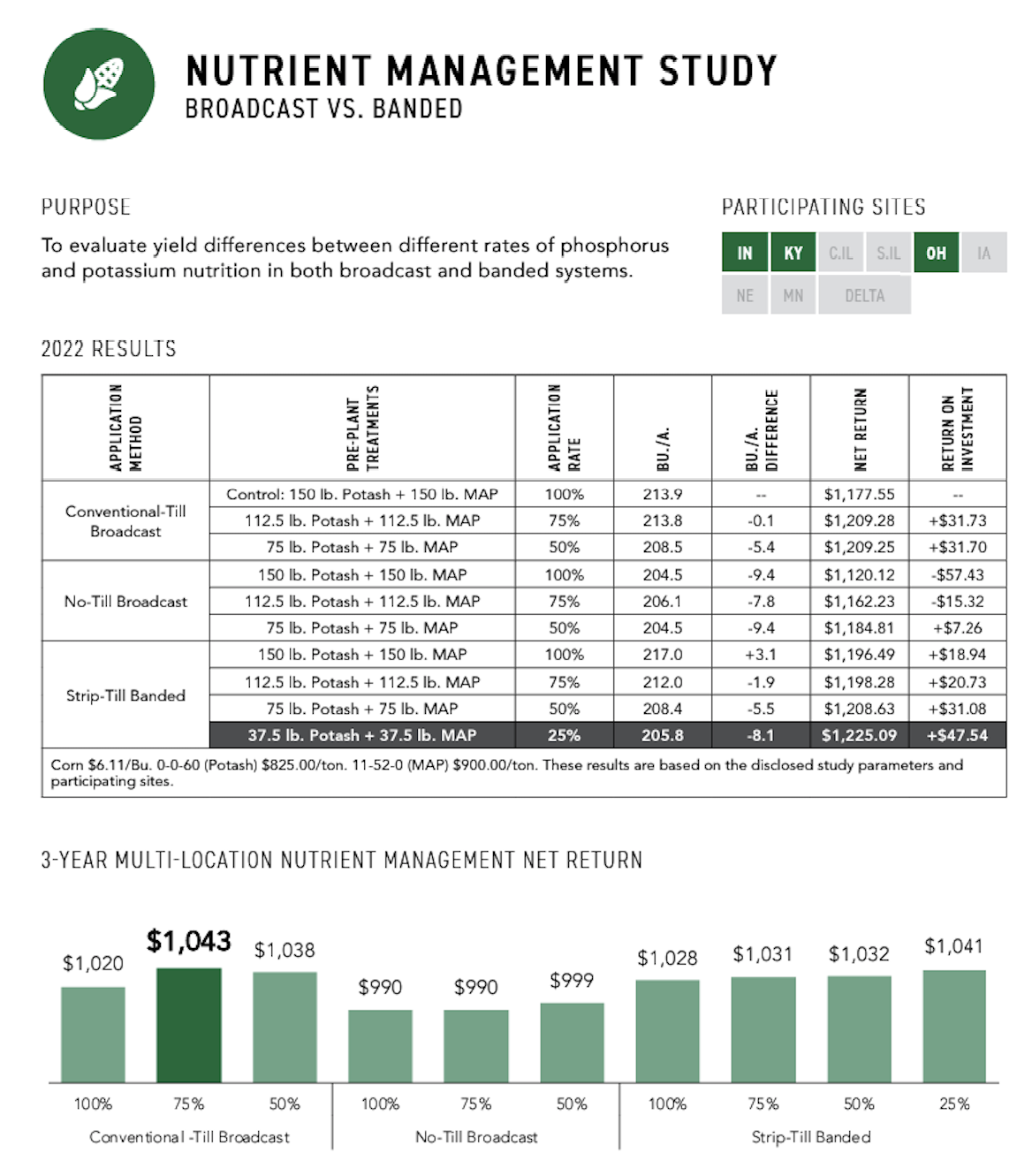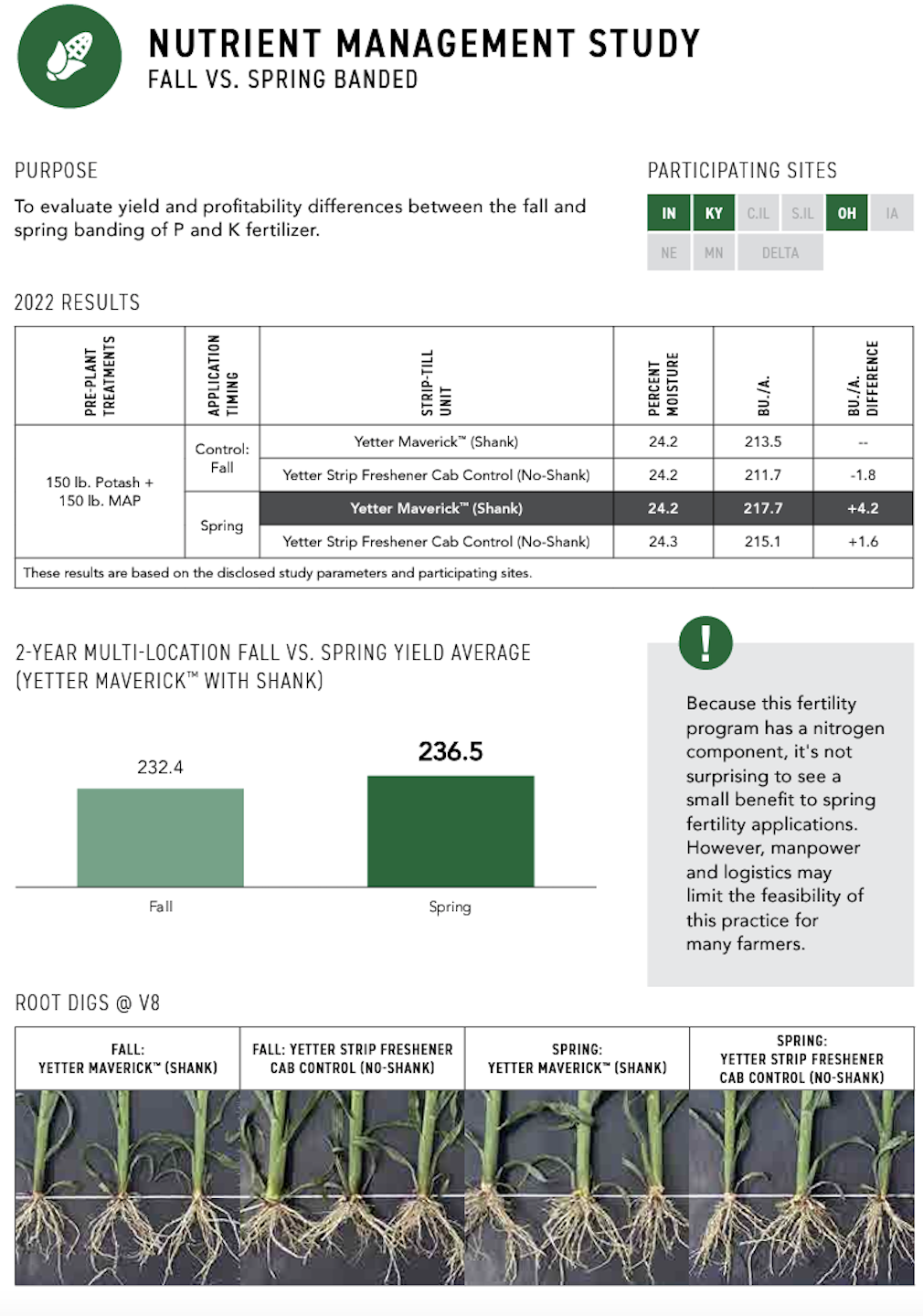Banding phosphorous (P) and potassium (K) with strip-till results in a bigger return on investment (ROI) and higher yields than broadcasting P and K with no-till, according to a recent Beck’s PFR study.
“After 3 years of conducting this study, we believe additional data is needed before drawing concrete conclusions. However, we have observed a fairly consistent trend favoring strip-till banding over no-till broadcast,” the study says.
The 3-year study compared conventional till broadcast, no-till broadcast and strip-till banded systems, and different application rates of MAP and potash with each system (see table below). The strip-till system applied fertilizer with a banding bar, while no-till and conventional used an air delivery system. 
The strip-till banded, 25% application rate of potash (37.5 pounds) and MAP (37.5 pounds) produced the highest ROI per acre of $47.54 in 2022. The 100% application rate of potash (150 pounds) and MAP (150 pounds) with the strip-till banded system produced the top yield of 217 bushels per acre.
Another 2-year multi-location study showed a 4.1-bushel advantage to banding P and K with a shank in the spring instead of the fall.
“Because this fertility program has a nitrogen component, it’s not surprising to see a small benefit to spring fertility applications. However, manpower and logistics may limit the feasibility of this practice for many farmers,” the study says.









Post a comment
Report Abusive Comment